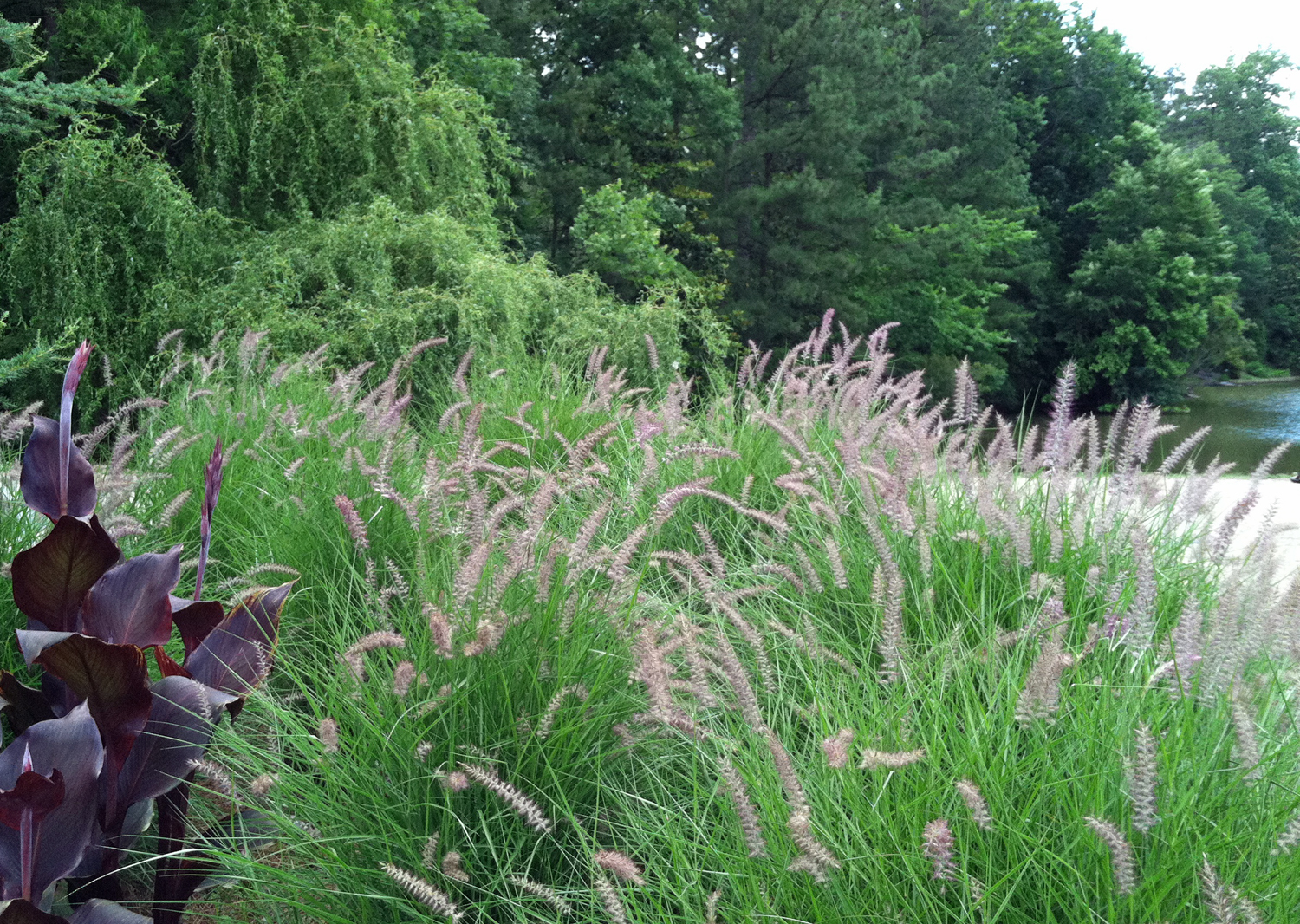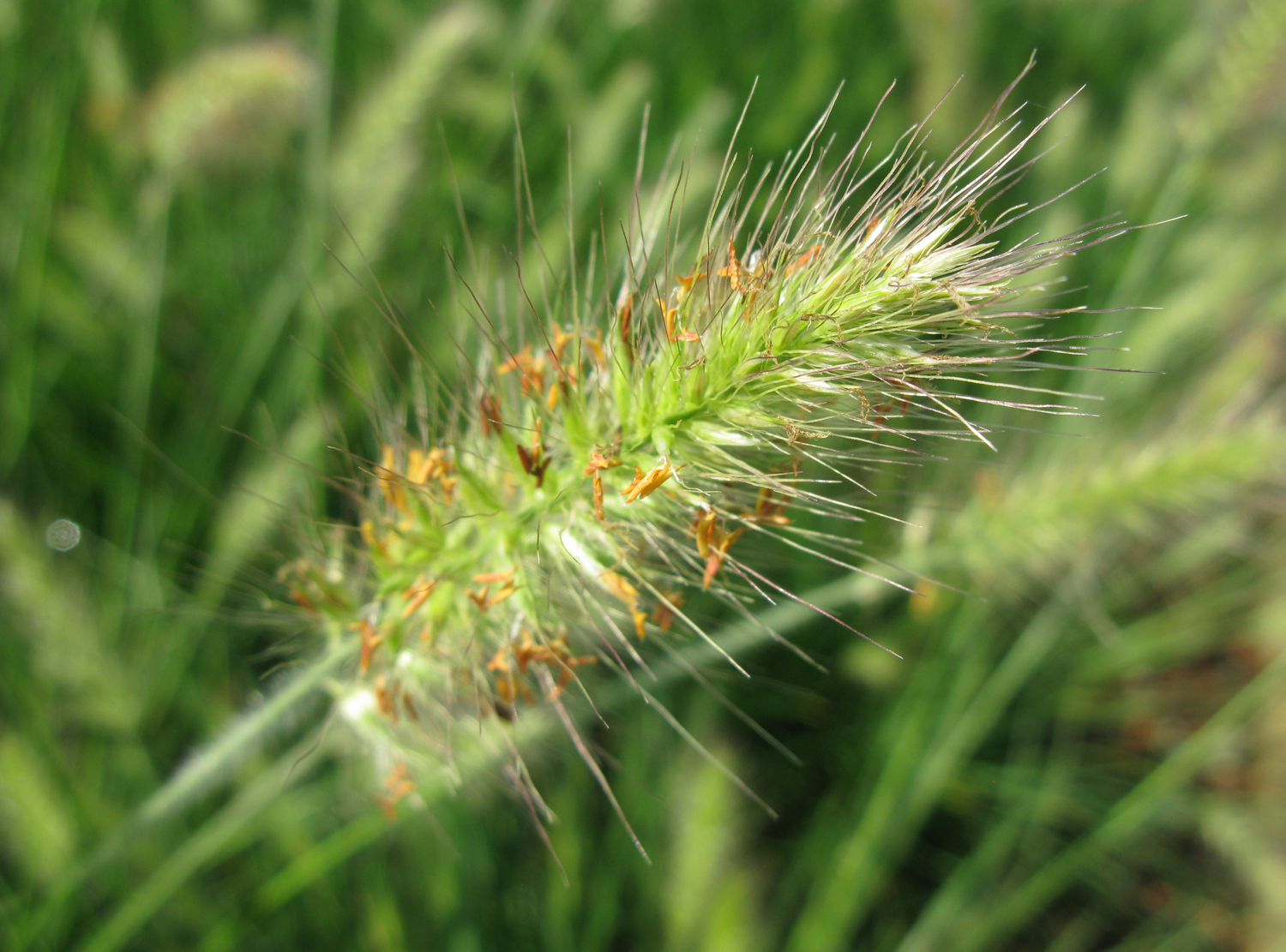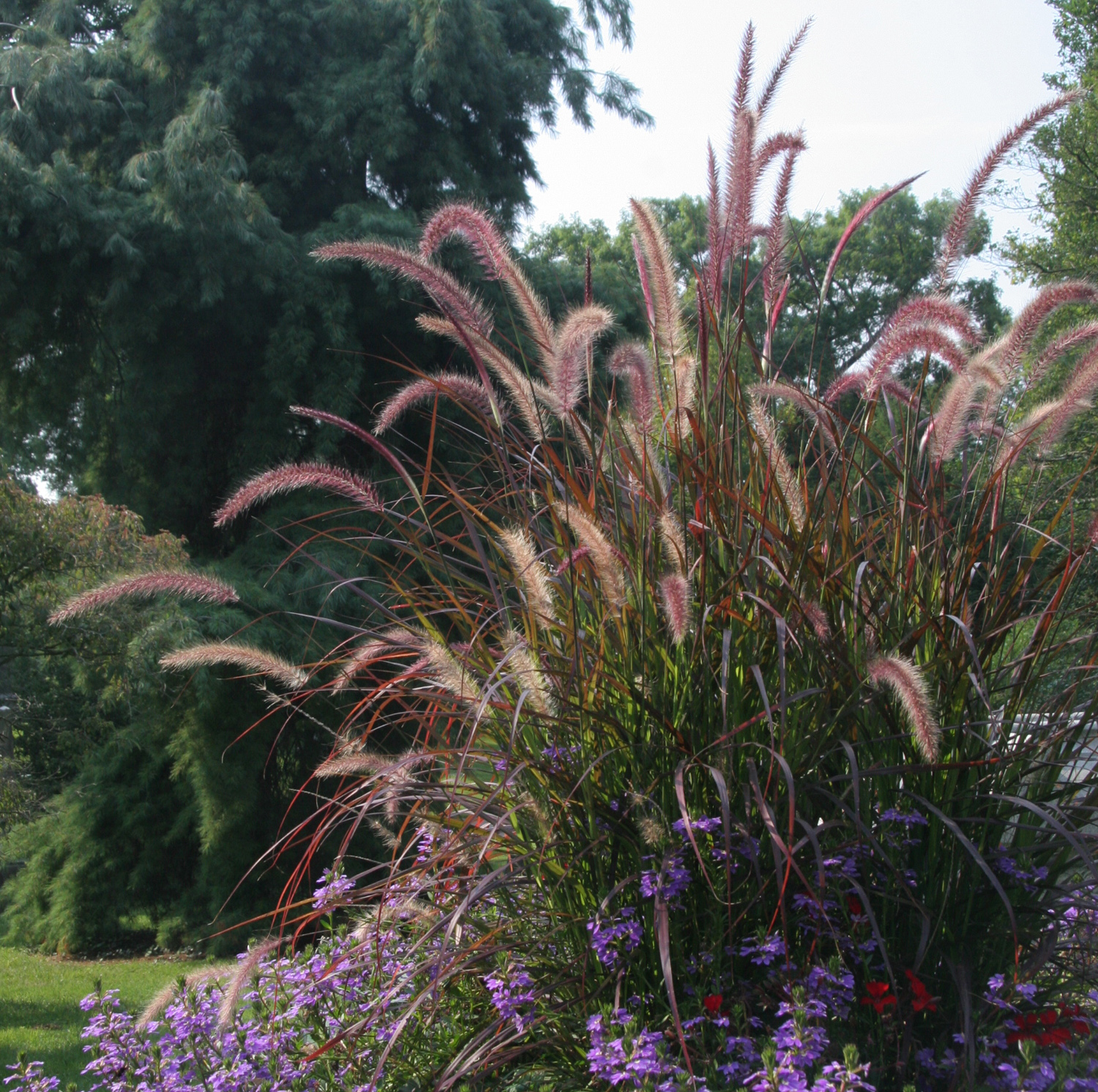Quick Look
Members of the genus Pennisetum are exquisite grasses with a timeless style. Most grow in flowing, fountain shapes, and many produce lovely, bottlebrush plumes. Others impress with colorful foliage. Tender selections, often red-leaved or variegated, enhance decorative containers and annual color beds. Hardy fountain grasses look spectacular in sweeping masses or specimens.
Pennisetum are native to Africa, Asia, and other tropical, subtropical, and temperate environments worldwide. They thrive in sun, heat, and humidity, and they require little maintenance. If planting in fall, plant at least a month before first frost. They need well-drained soils in winter for best survivability. To help choose the right Pennisetum for your needs, download our Fountain Grass Comparison Chart.




